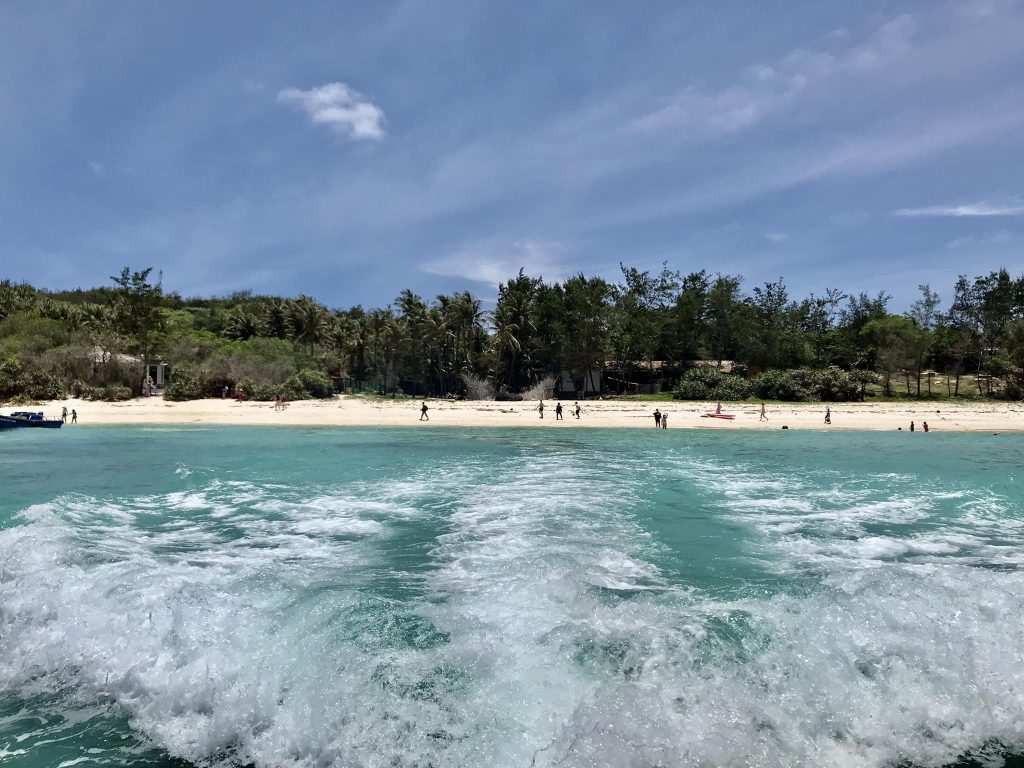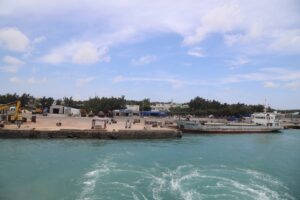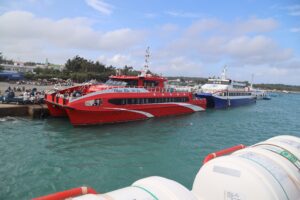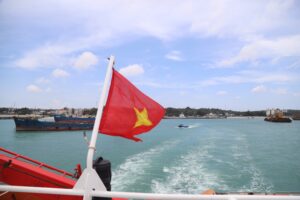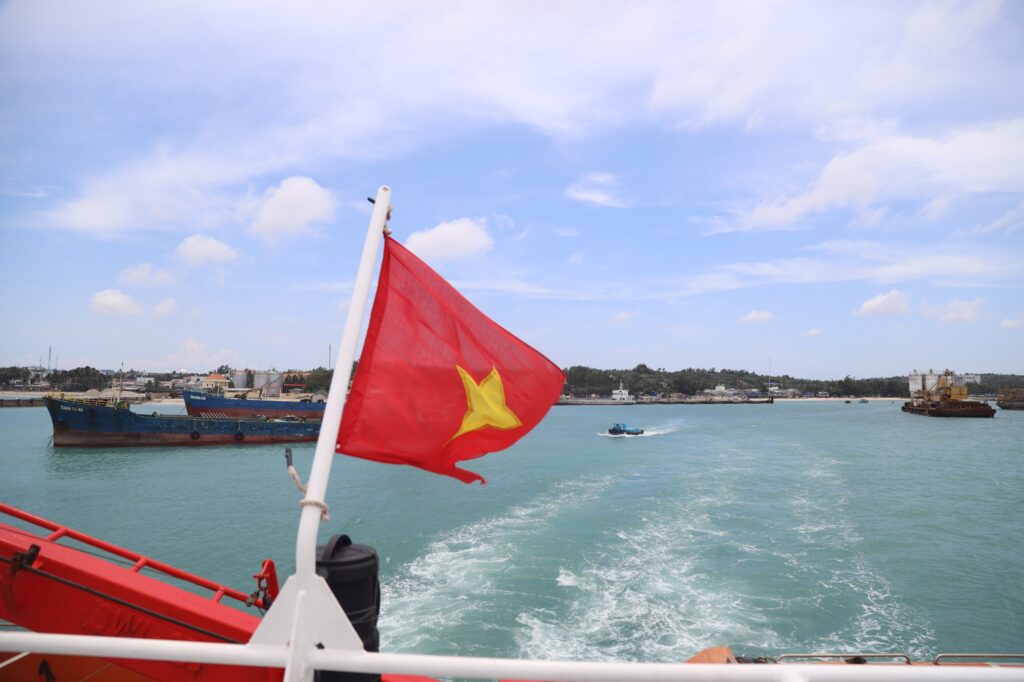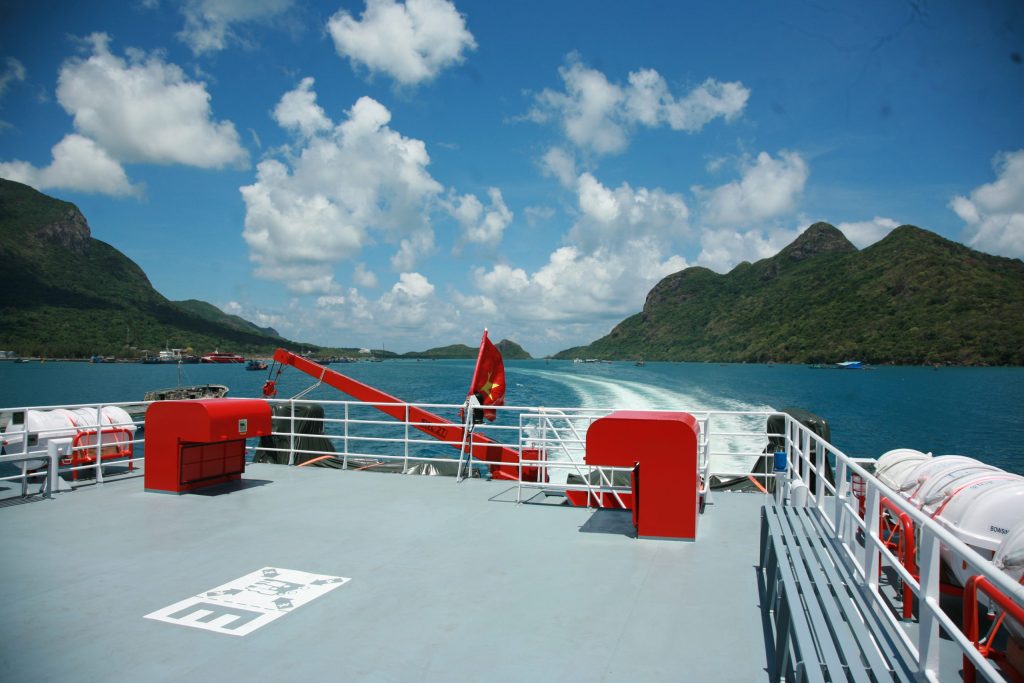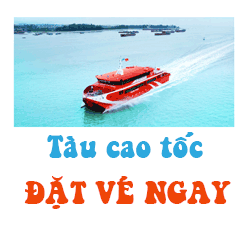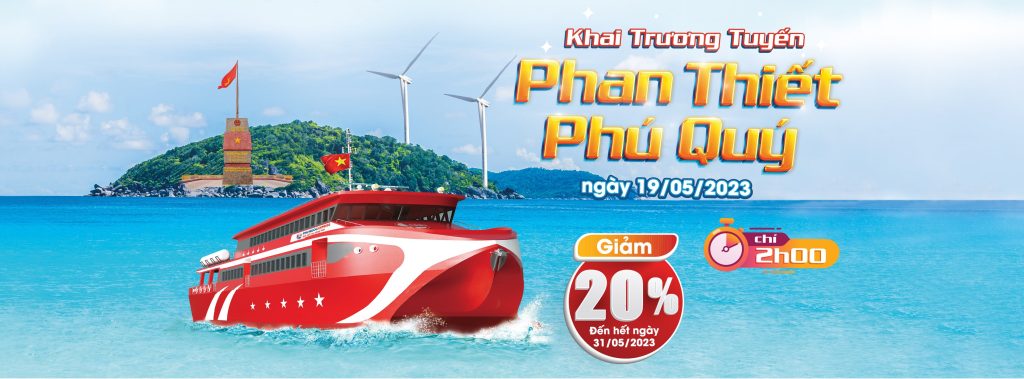After Hòn Thu (the main island of Phú Quý), Hòn Tranh is the second-largest island in this archipelago. Located about 800 meters from Phú Quý Island, Hòn Tranh has an S-shape, with its widest point measuring 400 meters and its longest about 1,000 meters.
The best time to visit Phú Quý Island is from April to October each year, when the sea is generally calm, making it ideal for sea travel and island activities. Since Hòn Tranh is nearly 1 km from the main island, visitors must take a small boat or canoe to get there, so it’s important to check weather and sea conditions before planning the trip.
In the past, Hòn Tranh was an uninhabited island where locals would come to harvest tranh grass for thatching roofs. Today, it is a designated security and defense zone for Phú Quý Island. At the highest point of Hòn Tranh sits a radar station with a 500-nautical-mile range of observation.
Although located offshore, Hòn Tranh enjoys calm seas all year round thanks to the mountains surrounding it, which act as natural wave barriers. The beaches here feature white sand and clear waters that reveal coral reefs and various types of seaweed beneath the surface.
Hòn Tranh also boasts a mysterious system of caves, with uniquely shaped indigo-colored rocks formed by ancient volcanic eruptions—each linked to local legends passed down by generations of fishermen. Along the southern shoreline of Hòn Tranh, visitors can explore scenic spots like Vũng Gần, Vũng Bàn, Mũi Xương Cá, and Vũng Phật.
There are also two notable caves on the island: Hang Cò Nước (Wet Heron Cave), where herons roost at night, and Hang Cò Khô (Dry Heron Cave), which contains a rocky area. In 1945, locals gathered weapons here in preparation for an uprising to seize power.
Vũng Phật is a sunken rocky area with reddish-brown stones. According to islanders, after Linh Quang Pagoda burned down and the Buddha statue was destroyed, a sacred Buddha-shaped rock emerged here. Locals brought it back and carved a new statue that now resides in the pagoda. Today, Vũng Phật remains a spiritual refuge for fishermen venturing out to sea.
Continue walking along the sandy shoreline and you’ll reach Trấn Bắc Shrine, dedicated to General Bùi Huy Ích, a talented military officer under Nguyễn Ánh who died protecting the king from Tây Sơn forces. Next to the shrine is a vạn (a local temple) where residents worship 77 Nam Hải deities who are believed to have drifted to the island. Every year, in the 3rd and 8th lunar months, people from the main island of Phú Quý cross over by motorboat to Hòn Tranh to hold memorials for General Bùi Huy Ích and offer sea prayers to the Nam Hải deities for a peaceful fishing season.
Hòn Tranh also served as a refuge for Emperor Gia Long. Besides Trấn Bắc Shrine, remnants from his stay include a freshwater well known locally as Giếng Nguyễn Ánh. Remarkably, the well provides clear, full water year-round, regardless of rainy or dry seasons—still used today by local soldiers.
Visiting Hòn Tranh feels like immersing yourself in nature. You can soak in the fresh, cool waters, lose yourself in the gentle symphony of the ocean waves, and marvel at the mesmerizing beauty of the sunset over the sea. It’s a quiet, unassuming kind of beauty that leaves a lasting impression. The island is also home to casuarina groves, as well as resilient phong ba (coastal trees) and wild pineapple plants stretching toward the sunlight and ocean breeze.
Surrounded by towering cliffs, the sea around Hòn Tranh is incredibly calm. The deep turquoise, crystal-clear waters make it possible to see all the way to the seabed. Snorkeling and coral viewing are highly enjoyable here, as the coral is colorful and abundant. The combination of the sea’s clarity, the deep blue sky, and the black volcanic rocks creates a striking, natural masterpiece.
From Hòn Tranh, you can look back at the main island and see lush casuarina forests and soft white sand beaches. On peaceful days, locals bring pots and stoves to cook their fresh catch right on the island—grilling, steaming, and savoring seafood in the heart of nature. It’s a low-cost yet deeply enriching backpacking experience, offering travelers the chance to discover the many wonders of Hòn Tranh Island.



